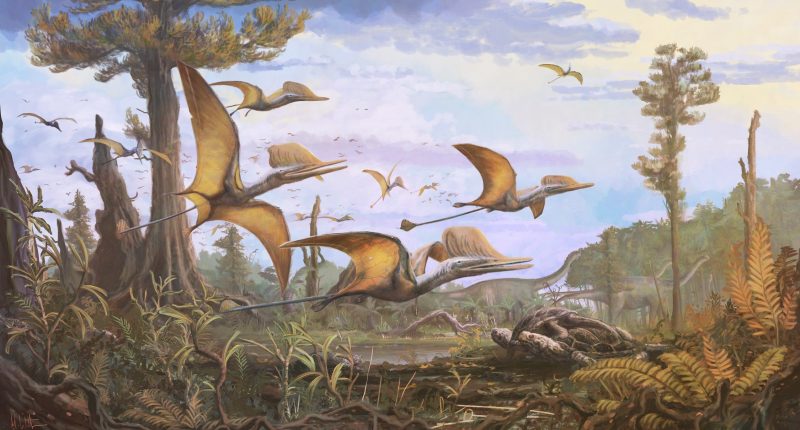A NEW species of pterosaur has been discovered — on a Scottish isle.
Named Ceoptera evansae, the sky beast lived between 166 and 168million years ago in the Mid-Jurassic period.
Palaeontologists spotted the fossil remains in 2006 on a field trip to Elgol, on the Isle of Skye.
As it is a Site of Special Scientific Interest, the team could only collect specimens from rocks that had fallen on to the beach.
They have spent the years since preparing the Ceoptera specimen and taking scans of the bones, some of which remain completely embedded in rock.
Only parts of the shoulders, wings, legs and backbone remain, but the researchers say it provides key insights into the evolution and diversity of pterosaurs.
READ MORE DINOSAUR NEWS
The new species belongs to a group known as Darwinoptera that may have persisted for more than 25million years — with many fossils found in China.
Prof Paul Barrett, of the Natural History Museum, said: “Ceoptera helps to narrow down the timing of several major events in the evolution of flying reptiles.
Why did the dinosaurs die out?
Here’s what you need to know…
- The dinosaur wipe-out was a sudden mass extinction event on Earth
- It wiped out roughly three-quarters of our planet’s plant and animal species around 66million years ago
- This event marked the end of the Cretaceous period, and opened the Cenozoic Era, which we’re still in today
- Scientists generally believe that a massive comet or asteroid around 9 miles wide crashed into Earth, devastating the planet
- This impact is said to have sparked a lingering “impact winter”, severely harming plant life and the food chain that relied on it
- More recent research suggests that this impact “ignited” major volcanic activity, which also led to the wiping-out of life
- Some research has suggested that dinosaur numbers were already declining due to climate changes at the time
- But a study published in March 2019 claims that dinosaurs were likely “thriving” before the extinction event
“It’s appearance in the Middle Jurassic of the UK was a complete surprise.
“It shows the advanced group to which it belongs appeared earlier than we thought and quickly gained an almost worldwide distribution.”
Most read in Tech
The first part of the new name comes from the Scottish gaelic word “cheo”, meaning mist or fog, and the Latin word “ptera”, meaning wing.
The second part — evansae — honours the work of palaeontologist Professor Susan E Evans, particularly on the Isle of Skye.










